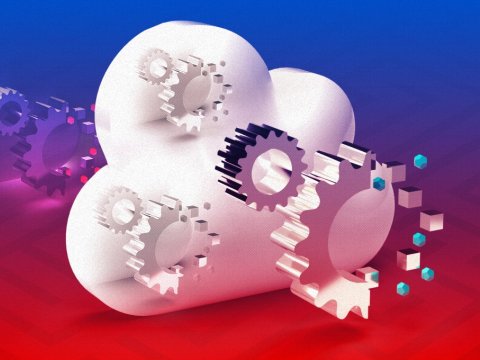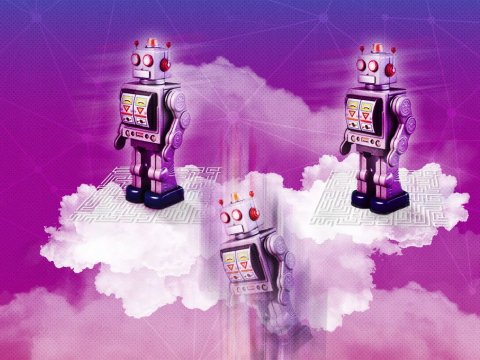The Pansophical Business
The goal has shifted to become a pansophical business — one that understands its customers, stakeholders, environment and ethical bounds.
Business leaders strive to delight their customers, partners and stakeholders with ever more targeted and relevant experiences at the optimum business moment and at great value price points. But the bar to lead is constantly rising with the explosion of data available, the rise of cloud native application development, the move to SaaS for commodity business capabilities, and the speed of new DevOps, DataOps, MLOps, and *Ops processes.
To leap over this rising bar, businesses must continually incorporate new technology, data, applications and processes to drive a level of pansophy or universal wisdom and knowledge to deliver the business results possible. But hard-to-find skills and lack of experience, understanding of the business and its data, and overcoming existing business inertia get in the way.
This is why the goal has shifted to becoming what I call a “pansophical business” — one that understands its customers, stakeholders, environment and ethical bounds and is continuously improving.
The ability to have this vision into and knowledge of your business conveys competitive advantage and the ability to lead and to delight customers. Some examples of innovation and leadership of a pansophical business include:
- Building an intelligent, integrated and automated value chain
- Delivering situationally aware real-time offers to your customers
- Implementing a unified and predictive view of customer
- Offering intelligent and autonomous vehicles and services
- Serving home diagnosis and suggesting remedies to patients
Meeting this goal requires a shift in thinking about the business and leveraging technology and insight.
The reality for many
The reality of business today is that most are not delivering the experiences and don’t have the insight — nor the skills and experience — to deliver on this vision of a pansophical business. Let’s explore a recent experience of mine as an example:
In 2020, interest rates fell to record lows and it was time to look at refinancing. We established banking relationships with three financial institutions, two of which offered low mortgage rates. Now that we had relationships and saving-and-spending patterns in place, it was time to move on this opportunity.
Unfortunately, the credit union with the best rates did not allow us to apply for the loan from our online account! I had to create another account into the “lending portal” to proceed. Worse, I had to retype my account information from my primary account into this lending application! We also had to go back and forth both in email and on the phone to get the right loan, at the price quoted at the time of application, since interest rates had risen. With this resolved, we proceeded to execute more smoothly. Had it not been for the 0.25% lower rate at the same price as their competitors, they would have lost me as a customer.
What drove the less-than-optimal experience with this credit union? Lack of an integrated, single view of customer, coupled with siloed and older web applications that did not work together.
Taking the next step
This financial institution can modernize this experience by understanding their current data architecture, as well as what data and processing each customer experience needs, and then developing a modern data architecture. Next, they must modernize the applications from their origins onto a cloud native platform supported by DevOps processes. Then they can leverage the latest AI/ML techniques to intelligently process data needed by these customer-facing applications to deliver the best experience. Last, but not least, the data and application architecture needs to be integrated such that the applications can get the right data at the right business moment.
They can do better with a modern data architecture, moving to a cloud native application development platform and DevOps, while incorporating AI/ML where it adds value (e.g., processing lots of data and/or real-time information for immediate use in many cases).
The issues with their customer experience can be improved as follows:
- Build a holistic and singular view of customer for yourself and your customers.
Understand all the data you have and what you need to know about your customers. Modernize data architecture and integrate and present a unified view of your company, services and customer interactions. The benefits of this are simplified and pleasant interactions from your customers’ viewpoint, reduced errors with a reduction in cost, and higher customer satisfaction.
- Modernize applications such as loan, account management and credit card management to a serverless and microservice-oriented architecture on the cloud, where possible.
Back-office applications that are more difficult to move can be staged over time and integrated via APIs. The benefits of this modern application architecture and data architecture are the ability to make additions and changes must faster, which is key to an agile business.
- To complete the transformation, move to DevOps and DataOps culture, tool chains and processes.
DevOps and DataOps with security considerations as part of their fabric allow a business to deliver on the promise of innovation, speed and agility enabled by modern application and data architectures.
The vision achieved
There are businesses that have mastered the state of the art and set themselves up to lead in this new world. Let’s explore one possibility.
Buying any large purchase item has changed significantly in the past few years as companies improve their data architectures and modernize their apps and infrastructure to become more aware of their customers’ needs. One such experience I enjoyed was the leasing of a new car during the beginning of the pandemic:
We’ve done business with this organization before and not only did they know it, but they’d built the experience based on previous interactions effectively. This included my web searches and cars I wanted to see — such that when we arrived at the dealership, the four models we wanted to see were ready to test drive. This organization was also prepared to offer leading financing on a model that worked for us and optimized total cost of ownership while minimizing payments. Ongoing service has been smooth and handled with concierge service options that minimize disruption.
They won our business because they gave us what we needed, when we needed it and how we wanted it — more so than their competitors. This organization obviously had a handle on the data from our interactions, including past, electronic and in person. They also had the vehicle equipped with a set of sensors on the Internet of Things to give us service updates, performance and other useful information and alerts. Their applications and data were modernized, cloud native, integrated and designed to create an exceptional experience.
What is a pansophical business?
This car manufacturer and dealer network is an example of a pansophical business. The pansophical business understands it customers, value chain, business environment and macro- and micro-market trends — with the ability to drive a leading value chain for all stakeholders and customers. This car company understood me as a customer both from buying needs as well as ongoing service with an almost omniscient approach.
5 steps to the vision
What makes this car company so intimate with its business environment? I observed a few focus areas that delivered a leading customer experience and business insights that form a virtuous cycle:
- Be data driven with a modern data architecture.
- Incorporate an ecosystem view of business data leveraging the Internet of Things.
- Think and do cloud native and DevOps.
- Build intelligent applications using AI/ML.
- Integrate apps and data to serve customers and stakeholders.

How Does Technology Improve Customer Experience? And What Barriers Stand in the Way?
About the Authors

Sr. Director, Portfolio Marketing
Pierre Fricke
Pierre Fricke leads portfolio marketing for Rackspace. Pierre is responsible for developing and implementing the integrated portfolio narrative and messaging framework globally for our full services portfolio, specific segments, and core customer challenges, plus ownership of the integrated, customer-facing roadmap. In 2018, as Rackspace’s Senior Director of Product Marketing for private cloud, Pierre led a team working to expand knowledge of the opportunities that private-cloud-as-a-service (PCaaS) offers enterprises on a digital transformation journey. Pierre co-lead Rackspace’s effort to define and lead this new PCaaS category and how it fits into a multi-cloud world with a rapidly growing business.
Read more about Pierre FrickeRelated Topics



